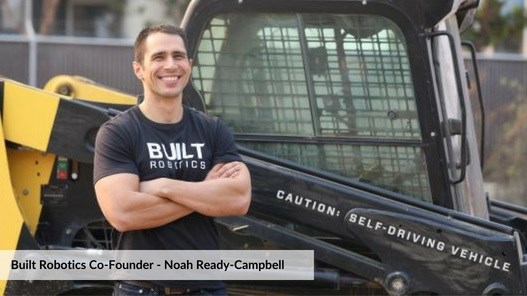The Self-Driving Skid Steer
We’ve all heard about self-driving cars and of flying cars that are apparently not far off of becoming reality in some parts of the world but what about construction industry machinery? Could the complexity of operating such heavy pieces of equipment, really be self-controlled? The answer is yes! And Noah Ready-Campbell, ex Google engineer is the man to speak to!
Although potentially some way off of hitting Australian shores, it’s work in progress that will no doubt be a consideration for Australian construction companies sometime in the future.
How It Came About
Back in 2010, talk within Google turned to building self-driving cars and everybody thought it was a crazy notion, but seven years on, the technology is working. So, with an interest in construction, stemming from his Father who worked as a general contractor, Ready-Campbell is getting in on the action and taking advantage of the dramatic advances in automation and going after the construction industry!
For the past two years, he’s been developing software and sensors that can turn ‘off the shelf’ excavators into robots that can dig holes with precision for hours without a break. This could revolutionise the construction industry as we know it!
Ready-Campbells start-up company, Built Robotics, has been operating a retrofitted skid steer, directing it via a computer program to move dirt around. The software is designed to geofence the project so that the machine cannot go off course (a relief to hear!). You then program in the exact parameters and where to move the dirt.

The Motivators
Ready-Campbell has found from speaking to some operators that their work is both dangerous and quite tedious at times so the idea that a robot can carry out these aspects of the job whilst a real person focuses on the parts that really do need human judgement, is of keen interest to him.
Another big motivator for Ready-Campbell has been the apparent lack of skilled labour in the US to fulfil the construction work demand. Self-driving heavy equipment, would hopefully alleviate this issue somewhat.
How It All Works
80-90% of the work can be carried out automatically by the machinery. However, a human can still start and stop the machinery if and when necessary. The operator simply has to map out the coordinates for the machinery in the appropriate software and they can then supervise the machine to ensure it is working in accordance with the plans. The real-time data sent back to the operator advises them of what work has been carried out and where exactly it has happened. Other important details such as fuel consumption, speed and engine temperature can also be tracked and sent back to the operator.
Other Construction Vehicles
There are a number of technology businesses now looking to build and design construction vehicles to help create a better workplace. Fully autonomous loaders, excavators and other construction vehicles are in the works, both with and without cabs and with operators either standing by the equipment as it works, or back at the site office.
The Future Of Operators
For some, including us if we’re being honest, the thought of machinery being self-driven is definitely somewhat frightening. The thought of operators losing work due to this technology is also concerning however we firmly believe (and so does Ready-Campbell) that this does not mean the end of drivers and operators within the construction industry.
What it will do is save on time on some aspects of heavy machinery work and will free up the operators to carry out the human-touch parts of the job that will always remain. In addition, these autonomous machines can potentially make the construction industry a lot safer. With safer work practices, better productivity and the technology to eliminate mistakes, this can only be a good thing, right?
If you have an excavation job in your sites, why not give us a call on 1800 344 448.